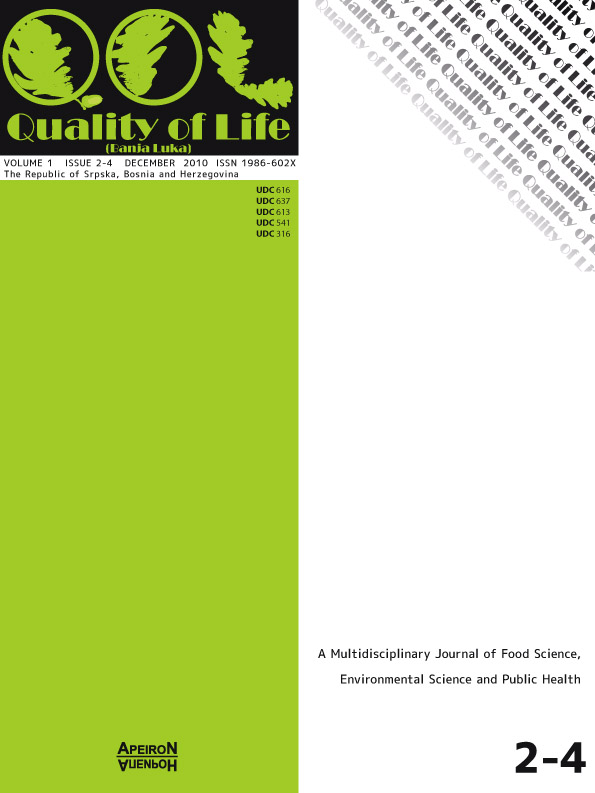Utilization of Recycled Polymer Matrices For Production of Eco-Composites
DOI:
https://doi.org/10.7251/QOL1002139SAbstract
One of the big new areas of development of the advanced composite materials is in combining natural fibers with thermoplastics for producing lightweight, environmentally friendly, cost-effective composite material.The aim of this work is to show the possibilities of recycling and reuse of thermoplastic polymer matrices with rice hulls (RH) and kenaf fibres (KF) using the conventional techniques, extrusion and compression moulding. The matrices (polypropylene (PP) and poly(lactic) acid (PLA) ) were recycled one and two times and the fibers/filler were compounded with recycled matrix. The processing and material properties have been studied on the composites with recycled matrix and compared to the composites with virgin matrix.
Characterization of all composites includes mechanical, morphological and thermo-gravimetrical analysis. Тhe flexural properties for PP recycled based composites were held close to the flexural properties for composite based on neat PP, but for PLA recycled based composite the flexural properties are decreased for about 50%. The thermal stability of recycled matrices based composites is very similar to the thermal stability of the composites with virgin matrix. SEM analysis has shown that the fillers/fibers are covered by the recycled polymer matrix, indicated on the satisfied durability of the recycled polymer matrices. The obtained results have shown that both polymer matrices (biodegradable and no degradable) could be recycled with acceptable mechanical properties and they can be successfully used for production of eco-composites.
Downloads
Published
2017-11-14
Issue
Section
Чланци
